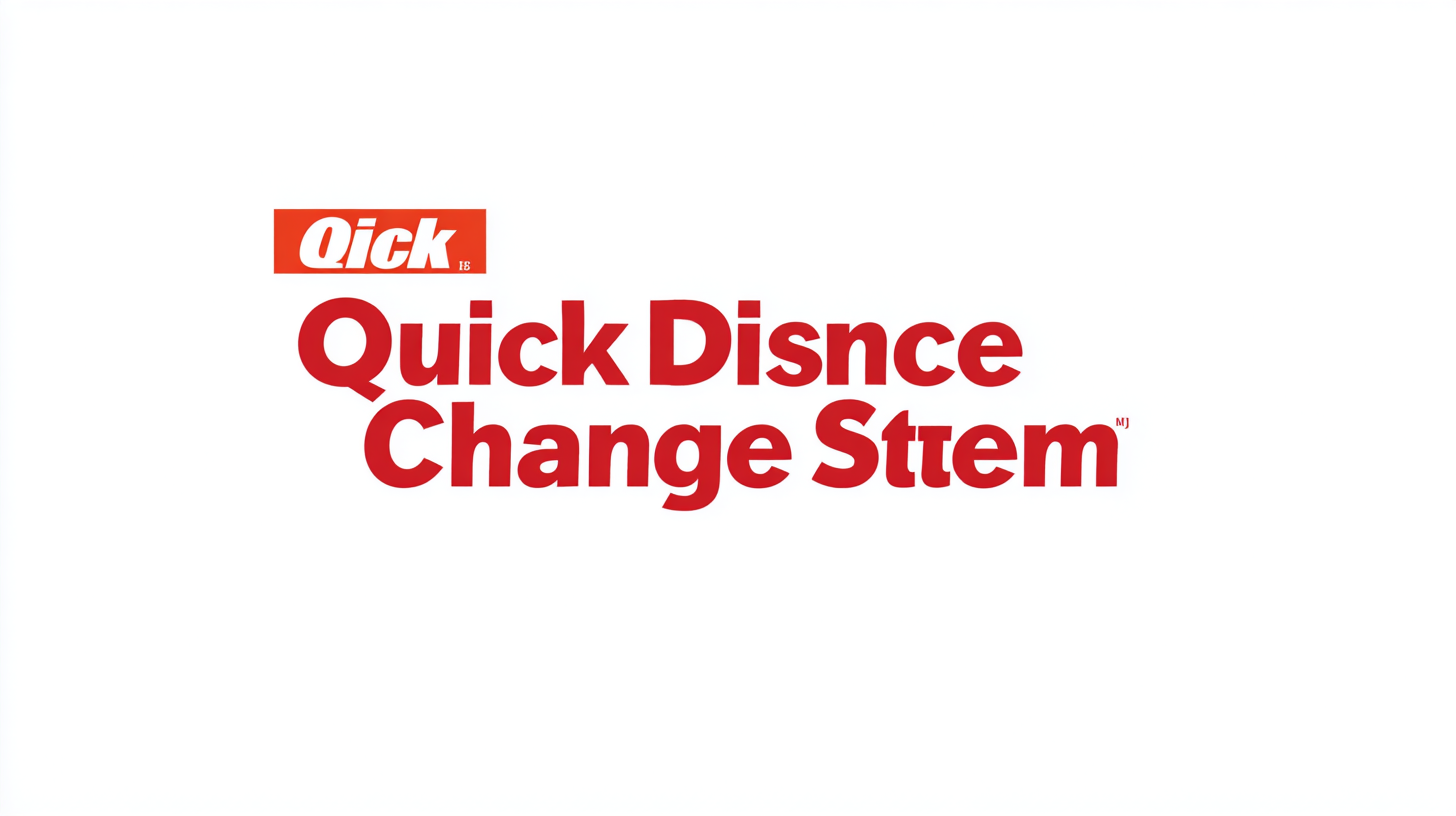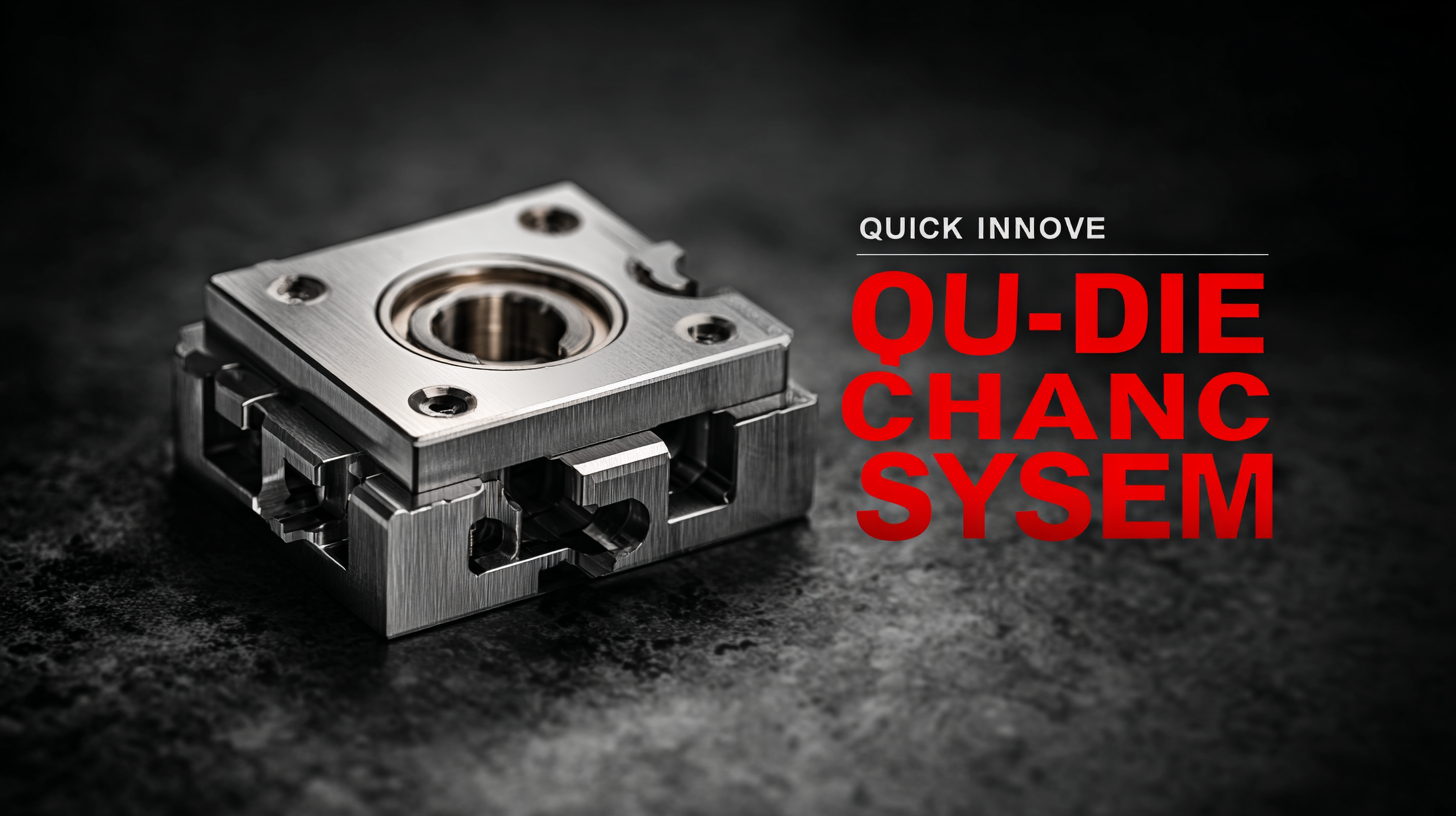Innovative Approaches to Quick Die Change System for Enhanced Manufacturing Efficiency
The manufacturing landscape is evolving at an unprecedented pace, driven by the need for heightened efficiency and productivity. According to a recent report by Market Research Future, the global market for Quick Die Change Systems (QDCS) is projected to reach $3.5 billion by 2025, highlighting the increasing importance of rapid changeover techniques in modern production environments. Industries are under continuous pressure to reduce downtime and improve operational effectiveness, making QDCS a critical component in achieving these goals. Innovative approaches, including the integration of digital technologies and advanced automation, are enabling manufacturers to streamline their die change processes, thereby minimizing lead times and maximizing throughput. As companies seek to remain competitive in a fast-paced market, adopting sophisticated Quick Die Change Systems is essential for enhancing manufacturing efficiency and meeting consumer demands.

Understanding Quick Die Change System and Its Impact on Manufacturing Efficiency
The Quick Die Change (QDC) system is a critical factor in modern manufacturing processes, enabling companies to minimize downtime and enhance overall efficiency. Implementing a QDC system streamlines the process of switching out dies for different production runs, significantly reducing the time required for setup. This agility not only accelerates production cycles but also allows manufacturers to respond swiftly to changing market demands, ultimately leading to a competitive edge.

Understanding the mechanics of QDC is crucial for businesses aiming to improve their production capabilities. The system typically involves standardized equipment and pre-set configurations that facilitate rapid die changes. Innovations in this area, such as automated systems and modular die designs, have significantly increased the effectiveness of QDC. As a result, manufacturers can achieve higher output levels while maintaining consistency and quality across various product lines. By investing in these innovative approaches, companies can further enhance their operational efficiency and adaptability in an ever-evolving marketplace.
Key Industry Metrics: Benefits of Quick Die Change for Cost Reduction and Productivity
In the quest for enhanced manufacturing efficiency, the adoption of Quick Die Change (QDC) systems has emerged as a pivotal strategy for reducing costs and boosting productivity. Key industry metrics indicate that QDC not only shortens production downtime but also improves flexibility in responding to market demands. With the continuous pressure to remain competitive, manufacturers are recognizing that streamlined operations through efficient die change processes can lead to significant financial savings and a notable increase in throughput.
Moreover, the integration of advanced analytics within manufacturing setups can further optimize QDC systems. By leveraging data-driven insights, companies can identify bottlenecks, predict maintenance needs, and minimize waste. This proactive approach aligns with the prevailing trend of digital transformation across factory environments, where the scalability of such innovations can significantly impact operational effectiveness.
As manufacturers navigate uncertainties in the global market, the ability to adapt quickly and efficiently becomes essential, ultimately paving the way for sustainable growth and enhanced profitability.
Identifying Quality Suppliers: Criteria that Boost Quick Die Change Implementation
In today's fast-paced manufacturing environment, the efficiency of operations is paramount, particularly when it comes to quick die change systems. Choosing the right suppliers plays a crucial role in the successful implementation of these systems. To optimize the die change process, manufacturers must identify suppliers who prioritize quality, responsiveness, and alignment with sustainability practices. This not only ensures high-quality materials but also fosters an environment of collaboration that can lead to innovative solutions tailored to production needs.
When evaluating potential suppliers, manufacturers should consider several key criteria. First, a supplier’s commitment to total quality management is essential; this reflects their ability to consistently reduce errors and enhance product standards. Additionally, the supplier’s ability to provide reliable lead times and adapt to changing demands is vital for meeting tight production schedules. Finally, an emphasis on social sustainability within the supply chain should be a non-negotiable requirement. Establishing relationships with suppliers who value ethical practices will contribute to a robust supply chain, fostering long-term improvements in manufacturing efficiency.

Step-by-Step Checklist for Evaluating Die Change System Suppliers
When evaluating die change system suppliers, it's essential to have a structured approach. A well-defined checklist can not only streamline the selection process but also enhance manufacturing efficiency. Recent studies indicate that manufacturers can reduce production downtime by up to 50% through the implementation of innovative quick die change systems. This dramatic improvement underscores the importance of thoroughly assessing potential suppliers based on their technology, experience, and flexibility.
First, evaluate the supplier's technology offerings. Look for systems that utilize automation, which can drastically cut down the time needed for die changes. According to a report by the Manufacturing Innovation Institute, automated die change systems can reduce changeover times by approximately 30%. Additionally, consider the supplier's experience in your specific industry; their track record can provide insights into reliability and performance. It's also crucial to assess the supplier's support services, as ongoing training and assistance can contribute significantly to the successful implementation of a die change system. By following these steps, manufacturers can select a supplier that not only meets their needs but also drives efficiency in their operations.
Case Studies: Successful Implementations of Quick Die Change Systems in Manufacturing
In recent years, many manufacturing companies have adopted Quick Die Change (QDC) systems to streamline their production processes. A recent study by the National Institute of Standards and Technology reveals that companies implementing QDC strategies have seen a reduction in die changeover times by up to 50%, significantly increasing their overall productivity. For instance, a case study from an automotive parts manufacturer showcased a transition from an eight-hour die change to just four hours, resulting in an annual savings of over $300,000 in labor costs. This efficiency gain not only optimizes production schedules but also enhances product quality through more consistent operations.
When considering the implementation of QDC systems, here are a few tips to ensure success: First, invest in training your workforce extensively on the new procedures and systems. Knowledgeable staff can significantly hasten the transition and minimize errors during die changes. Second, conduct regular maintenance and upgrades on equipment to keep the systems functioning smoothly. Lastly, analyze bottlenecks within your current processes and tailor your QDC solutions to specifically address those pain points. By adopting these approaches, manufacturers can maximize the benefits of Quick Die Change systems and elevate their operational performance.
Innovative Approaches to Quick Die Change System for Enhanced Manufacturing Efficiency
| Implementation Area | Initial Downtime (Hours) | Post-Implementation Downtime (Hours) | Efficiency Gain (%) | Cost of Implementation ($) | Payback Period (Months) |
|---|---|---|---|---|---|
| Automotive Parts | 12 | 6 | 50 | 15000 | 10 |
| Metal Fabrication | 15 | 7 | 53.33 | 20000 | 11 |
| Electronics Assembly | 10 | 4 | 60 | 12000 | 8 |
| Injection Molding | 20 | 10 | 50 | 25000 | 12 |
| Textile Manufacturing | 8 | 3 | 62.5 | 8000 | 7 |
 English
English Español
Español Português
Português русский
русский Français
Français 日本語
日本語 Deutsch
Deutsch tiếng Việt
tiếng Việt Italiano
Italiano Nederlands
Nederlands ภาษาไทย
ภาษาไทย Polski
Polski 한국어
한국어 Svenska
Svenska magyar
magyar Malay
Malay বাংলা ভাষার
বাংলা ভাষার Dansk
Dansk Suomi
Suomi हिन्दी
हिन्दी
